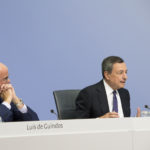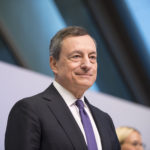The ECB leaves its roadmap unchanged
The European Central Bank on Thursday announced it is maintaining its monetary policy unchanged. Interest rates will remain at current levels until the summer of 2019 or “as long as necessary”, as announced in its June meeting. In doing so, ECB President Mario Draghi gave no further clarification on the next steps in the bank’s roadmap and intoned the mantra of prudence and patience.

In its ECB Watch report, BBVA Research notes Draghi’s cautious tone and pointed to, as expected, the absence of any change in the ECB’s monetary with regard to its previous meeting held in June. Interest rates will remain unchanged at least until the summer of next year; that is at 0 percent for its marginal lending facility at -0.4 percent for its deposit facility. Thereafter, a first rate hike is expected if warranted by the economic situation.
On the asset-purchasing programs, known as quantitative easing (QE), Draghi reiterated that as of next October debt purchases would be cut to €15 billion a month from the current €30 billion. The ECB Governing Council intends to maintain this amount until December 2018 when the program ends.
On the inflation front, the central bank underlined that underlying inflation remains low and below the 2-percent target marked by the ECB’s mandate. However, as BBVA Research points out, the ECB is confident of a pick-up in inflation at the end of the year and for it to trend higher in the medium term. The Governing Council, therefore, sees the need to remain prudent and maintain an accommodating monetary policy.

ECB President Mario Draghi during the press conference
Prudence before growth
The ECB deems euro-zone economic growth to be “solid and broad-based” as shown by the economic indicators. Mario Draghi insisted on the need to remain cautious regarding the data, particularly in light of the potential risks posed by trade protectionism. However, the ECB president acknowledged that the impact of protectionist measures introduced by the U.S. has so far been limited, although the effect could be significant if the U.S. opts for reprisals using indirect channels.
In this area, the ECB president welcomed the recent Juncker-Trump agreement on a tariff truce between the United States and the European Union. According to Draghi, this agreement is a “good sign” because it shows a “willingness to discuss trade issues in a multilateral framework again.” However, he continues to believe it is too early to gauge how this accord will feed through to the European economy.
On balance, BBVA Research notes the lack of further details on the part of the ECB on the roadmap toward monetary policy normalization. The ECB Watch report notes “the important moves made by the ECB toward normalization” as witnessed for example by setting the conclusion of its asset-purchasing program. According to BBVA Research, when QE ends, the period of non-standard measures will be drawing to a close, heralding a return to a more conventional monetary policy path. Over the next few months, the focus will be on knowing when and how interest rates rise.